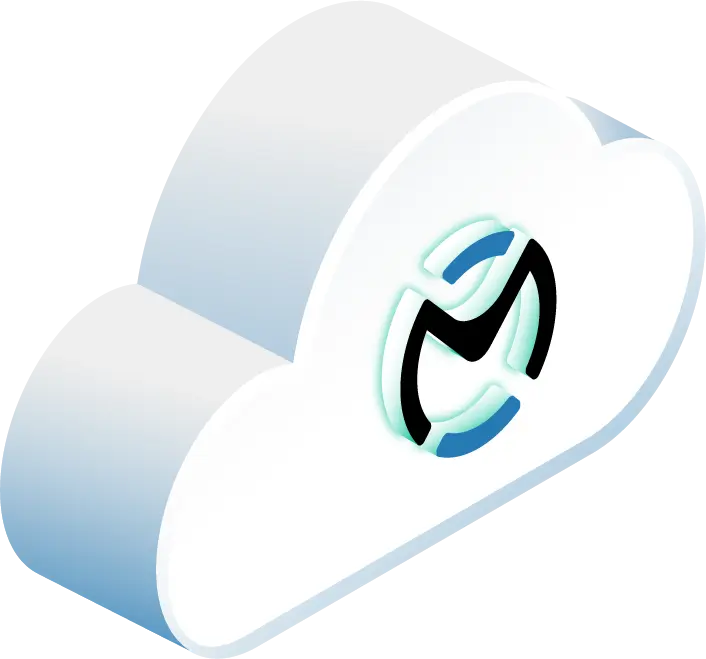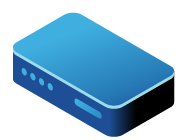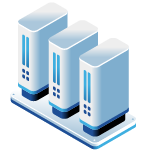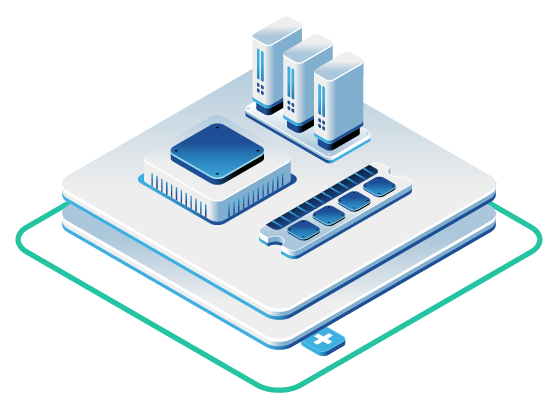In this article
- Why PostgreSQL and Citus Make the Perfect Data Warehouse Foundation
- The OpenMetal Advantage for Data Warehouse Infrastructure
- Designing Your Distributed PostgreSQL Architecture
- Implementation Guide: Building Your Citus Data Warehouse
- Real-World Performance Considerations
- Cost Optimization Strategies
- Future-Proofing Your Data Warehouse
- Making the Migration Decision
- Getting Started with Your PostgreSQL and Citus Data Warehouse Implementation
Modern businesses generate data at unprecedented scales. Traditional single-node database solutions, once adequate for most analytical workloads, now struggle under the weight of billions of records and complex analytical queries. You need a solution that can scale horizontally while maintaining the familiar SQL interface your teams already know and love.
Enter the powerful combination of PostgreSQL and Citus on OpenMetal’s bare metal cloud infrastructure. This architecture delivers the distributed computing power needed for enterprise-scale data warehousing while preserving the open source flexibility and cost-effectiveness that modern organizations demand.
Why PostgreSQL and Citus Make the Perfect Data Warehouse Foundation
PostgreSQL has earned its reputation as the world’s most advanced open source database through decades of development and real-world deployment. Citus extends Postgres with superpowers like distributed tables, distributed SQL query engine, columnar compression, and more. This combination creates a distributed SQL solution that can scale to handle massive datasets while maintaining full PostgreSQL compatibility.
Citus turns Postgres into a sharded, distributed, horizontally scalable database, but it does so for very specific purposes. The extension is particularly suited for two primary use cases: multitenant SaaS applications where data is naturally partitioned by tenant, and real-time analytics dashboards requiring fast aggregations across large datasets.
For data warehousing specifically, Citus speeds up queries by 20x to 300x (or more) through parallelism, keeping more data in memory, higher I/O bandwidth, and columnar compression. This performance gain transforms how your organization approaches analytical workloads, enabling near real-time insights from datasets that previously required hours to process.
The architectural advantage becomes clear when you consider query execution. With real-time analytics, queries execute across all the nodes using as many cores as available within the cluster. Instead of a single database server becoming the bottleneck, your analytical queries distribute across multiple nodes, each contributing its full processing power to deliver results faster.
The OpenMetal Advantage for Data Warehouse Infrastructure
A scalable and cost-effective data warehouse is often a balance between performance, control, and predictable costs. While public cloud providers offer a quick entry point, their pay-as-you-go models can lead to unpredictable billing and a “noisy neighbor” problem where shared infrastructure impacts performance. This is where the concept of a hosted private cloud, and specifically the OpenMetal approach, becomes an appealing solution.
Dedicated Hardware
Using on-demand private clouds built on dedicated hardware, you gain the benefits of cloud agility like rapid deployment and scalability with the control and performance of a bare metal environment. The result is a platform that’s perfect for data-intensive workloads like a PostgreSQL and Citus data warehouse.
Open Source Technology
The architecture of OpenMetal, built on open source technologies like OpenStack and Ceph, aligns with the open nature of PostgreSQL and Citus. This combination provides a transparent, flexible, and powerful foundation without the risk of vendor lock-in. OpenMetal’s solutions provide a level of control that allows for fine-tuning the underlying hardware and network to maximize the performance of your distributed PostgreSQL cluster.
Easy Scalability
With dedicated bare metal servers, you can configure Citus nodes exactly as needed, ensuring that you’re not paying for virtualized resources that you can’t fully use. The on-demand private cloud model allows you to scale your data warehouse horizontally by adding more servers to your cluster as your data volume grows, all within a predictable cost framework.
Cost Predictability
One of the key advantages is the predictability of cost. OpenMetal’s fixed-cost model with a large bandwidth and egress allowance eliminates the surprise bills that are common with public clouds. For a data warehouse, where large-scale data transfers and analytical queries are the norm, this predictable pricing is a significant strategic benefit. It allows you to focus on building and optimizing your data analytics without worrying about runaway costs associated with data movement.
This, combined with the superior performance of dedicated hardware, means that your queries run faster and your ETL processes are more efficient, directly translating to lower operational costs and a better return on your investment.
Designing Your Distributed PostgreSQL Architecture
When architecting a PostgreSQL and Citus data warehouse on OpenMetal, you’ll need to make several design decisions that will impact both performance and scalability.
Node Configuration and Sizing
Your Citus cluster consists of a coordinator node and multiple worker nodes. The coordinator handles query planning and routing, while worker nodes store data shards and execute the actual computations. A physical node may contain multiple shards. To understand Citus at a high-level:
- Physical node: the physical container that holds shards
- Shard: a logical container for data; resides on a physical node, and can be moved between physical nodes
- Placement group: uses a hash-based algorithm to assign a tenant id to a shard
For optimal performance, configure your worker nodes with high-performance NVMe storage and sufficient RAM to keep frequently accessed data in memory. OpenMetal’s bare metal servers provide the raw processing power needed for complex analytical queries, while the predictable performance eliminates the variability common in virtualized environments.
Sharding Strategy for Analytical Workloads
For multitenant/SaaS, leveraging Citus requires the tenant id a column on every table. However, for general analytical workloads, you’ll typically shard on a dimension that ensures even data distribution and enables query pushdown to individual nodes.
Time-based sharding often works well for data warehouses processing event data or transaction logs. By sharding on date ranges, you can use Citus’s ability to eliminate entire shards from query execution when filtering by time periods, dramatically improving query performance.
Columnar Storage for Analytics
Citus supports columnar compression to deal with large data volumes, and can be combined with PostgreSQL’s time partitioning to optimize your timeseries queries. This columnar storage format is particularly beneficial for analytical queries that aggregate across many rows but only access a subset of columns.
The combination of horizontal partitioning through sharding and columnar compression creates a powerful foundation for analytical processing. Your queries benefit from both parallel execution across nodes and efficient storage that minimizes I/O requirements.
Implementation Guide: Building Your Citus Data Warehouse
Step 1: Environment Setup on OpenMetal
Begin by provisioning your OpenMetal environment with the appropriate hardware configuration. For a production data warehouse, consider starting with multiple bare metal servers configured as follows:
- Coordinator Node: A server with high CPU performance and sufficient RAM for query planning and metadata management. This node doesn’t store large amounts of data but needs processing power for coordinating distributed queries.
- Worker Nodes: Multiple servers optimized for storage and parallel processing. Each worker should have high-performance NVMe storage, plenty of RAM, and multiple CPU cores to handle concurrent analytical queries.
- Storage Configuration: Use OpenMetal’s Ceph storage cluster for backup and archival purposes, while using local NVMe storage on each node for hot data that requires maximum performance.
Step 2: PostgreSQL and Citus Installation
Install PostgreSQL on all nodes, then add the Citus extension. The beauty of Citus lies in its simplicity. Citus is an extension (not a fork) to the latest Postgres versions, so you can use your familiar SQL toolset and lean on your Postgres expertise.
Configure the coordinator node to communicate with all worker nodes, establishing the distributed architecture that will power your analytical queries. The setup process involves adding worker nodes to the coordinator’s metadata and configuring networking between nodes.
Step 3: Schema Design and Data Distribution
Design your table schemas with distribution in mind. Include a where condition for the tenant id in all queries as well. This ensures that Citus knows how to push down the join to that single node. While this example refers to tenant-based sharding, the principle applies to any sharding key; always include your distribution column in queries to enable efficient query pushdown.
Create distributed tables using Citus functions that automatically shard your data across worker nodes. For analytical workloads, consider the trade-offs between hash distribution for even data spread and range distribution for time-based queries.
Step 4: ETL Pipeline Integration
Design your ETL processes to work efficiently with the distributed architecture. Citus excels at parallel data ingestion, allowing you to load data simultaneously across multiple worker nodes. This parallel approach significantly reduces the time required for large batch loads common in data warehousing.
Consider using PostgreSQL’s COPY command with parallel execution across nodes for bulk data loads. For real-time streaming data, implement change data capture (CDC) processes that can distribute incoming data across your cluster as it arrives.
Step 5: Query Optimization and Performance Tuning
This results in fast aggregations across large datasets. But if you haven’t thought ahead yet, this only works for very specific queries. Counts and averages are great. If you’re looking to do something like median, that gets a little harder.
Optimize your queries for distributed execution by focusing on operations that can be efficiently parallelized. Aggregations, filtering, and grouping operations work well, while operations requiring global ordering or complex window functions may need special consideration.
Monitor query execution plans to ensure that operations are being pushed down to worker nodes rather than requiring data movement to the coordinator. Poor shard key planning would require joining data across the network. This shuffling of data is detrimental to performance within databases, especially distributed ones.
Real-World Performance Considerations
Managing Connections and Concurrency
One weak area of Postgres is connection management and scaling those, so, we recommend pgBouncer. “pgbouncer is a PostgreSQL connection pooler. Any target application can be connected to pgbouncer as if it were a PostgreSQL server, and pgbouncer will create a connection to the actual server, or it will reuse one of its existing connections.” In a distributed environment, connection management becomes even more critical as each query may need to establish connections to multiple worker nodes.
Implement connection pooling at both the application and database levels. pgBouncer can improve performance by reusing connections and managing the connection overhead that would otherwise impact query performance.
Handling Large Result Sets
For queries returning large result sets, consider implementing result pagination or streaming to avoid overwhelming the coordinator node. The coordinator must aggregate results from all worker nodes, and very large result sets can create memory pressure and impact overall cluster performance.
Monitoring and Maintenance
Establish comprehensive monitoring for your distributed PostgreSQL cluster. Track key metrics including query performance, node utilization, data distribution balance, and connection usage. OpenMetal’s infrastructure provides the visibility needed to monitor hardware performance, while PostgreSQL and Citus offer extensive statistics for database-level monitoring.
Regular maintenance tasks become more complex in a distributed environment. Plan for operations like VACUUM, ANALYZE, and statistics updates across all nodes. Citus provides utilities to execute maintenance operations across the entire cluster, simplifying these routine tasks.
Cost Optimization Strategies
The combination of PostgreSQL, Citus, and OpenMetal creates multiple opportunities for cost optimization that aren’t available with proprietary data warehouse solutions.
Eliminating License Costs
By choosing open source technologies, you eliminate the substantial licensing costs associated with proprietary databases. These savings often justify the initial investment in building and managing your own infrastructure, especially as your data volumes grow.
Predictable Infrastructure Costs
OpenMetal’s fixed-cost model provides budget predictability that’s great for data warehouse operations. Unlike public cloud environments where query complexity and data movement can drive unexpected costs, you know exactly what your infrastructure will cost each month.
Efficient Resource Utilization
The ability to configure hardware specifically for your workload ensures you’re not paying for unused capacity. With bare metal access, you can optimize memory allocation, storage configuration, and network settings to maximize the value of every server in your cluster.
Future-Proofing Your Data Warehouse
Integration with Modern Data Ecosystems
Running on OpenMetal provides control and cost predictability while maintaining compatibility with the broader PostgreSQL ecosystem.
Your PostgreSQL and Citus data warehouse integrates seamlessly with modern data tools including business intelligence platforms, machine learning frameworks, and data pipeline orchestration tools. The standard SQL interface ensures compatibility with virtually any tool in your data stack.
Scaling Strategies
As your data grows, Citus provides multiple scaling options. You can add worker nodes to increase parallel processing capacity, implement additional sharding to distribute data more granularly, or use features like columnar storage for improved compression and query performance.
The OpenMetal platform supports this growth with on-demand infrastructure provisioning. Adding new worker nodes to your cluster becomes a straightforward process of provisioning additional bare metal servers and integrating them into your existing Citus cluster.
Adapting to Changing Requirements
The flexibility of open source technologies means your data warehouse can evolve with your needs. Whether you need to integrate new data sources, support additional query patterns, or implement advanced analytics features, the PostgreSQL and Citus foundation provides the extensibility to adapt and grow.
Making the Migration Decision
Organizations considering a move to PostgreSQL and Citus on OpenMetal should evaluate their current data warehouse limitations against the benefits of a distributed, open source approach. The biggest issue is often the very high costs for licenses and upkeep. Licenses for proprietary software, like Oracle’s per-processor or Named User Plus (NUP) models for its Enterprise Edition and related options such as Multitenant, Real Application Clusters (RAC), Advanced Compression, and Diagnostics Pack, can use up large parts of IT budgets.
Beyond cost considerations, evaluate whether your current system can handle your projected data growth and analytical requirements. Legacy data warehouses, often with many additions and changes as time goes on, tend to get slower and more complex with each passing year.
The combination of PostgreSQL, Citus, and OpenMetal addresses these challenges by providing a modern, scalable architecture that grows with your needs while maintaining predictable costs and transparent performance characteristics.
Getting Started with Your PostgreSQL and Citus Data Warehouse Implementation
Begin your journey with a proof of concept that demonstrates the performance and cost benefits of the PostgreSQL and Citus combination on OpenMetal infrastructure. Start with a representative subset of your data and analytical workloads to validate the architecture before committing to a full migration.
The phased approach allows you to build expertise with the technology stack while demonstrating value to stakeholders. As you gain confidence with the platform, you can expand the implementation to handle more complex workloads and larger data volumes.
The future of data warehousing lies in open, flexible architectures that provide the performance and scalability of enterprise solutions without the limitations and costs of proprietary systems. PostgreSQL and Citus on OpenMetal deliver this future today, giving you the tools needed to build a world-class analytical platform that serves your organization’s growing data needs.
By choosing this open source approach on OpenMetal’s predictable, high-performance infrastructure, you’re not just solving today’s data challenges, you’re building a foundation that can adapt and scale with your organization’s future requirements. The combination of proven technologies, cost-effective infrastructure, and unlimited customization potential creates a data warehouse platform that truly works for you, not against you.
Schedule a Consultation
Get a deeper assessment and discuss your unique requirements.
Read More on the OpenMetal Blog


































